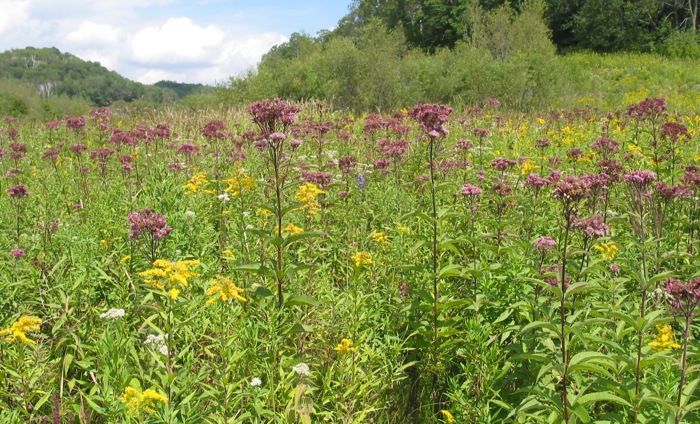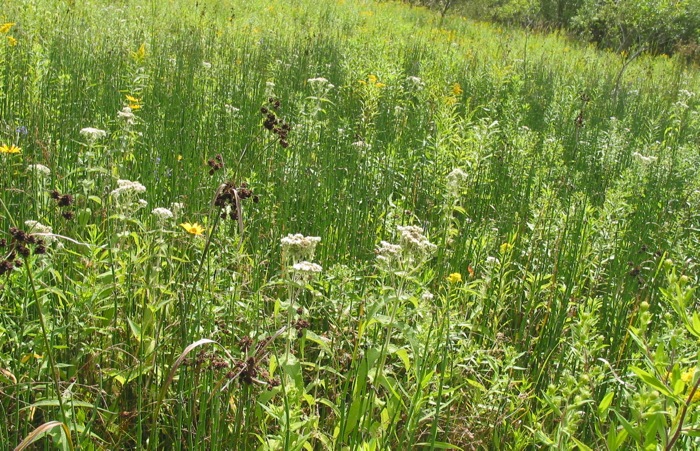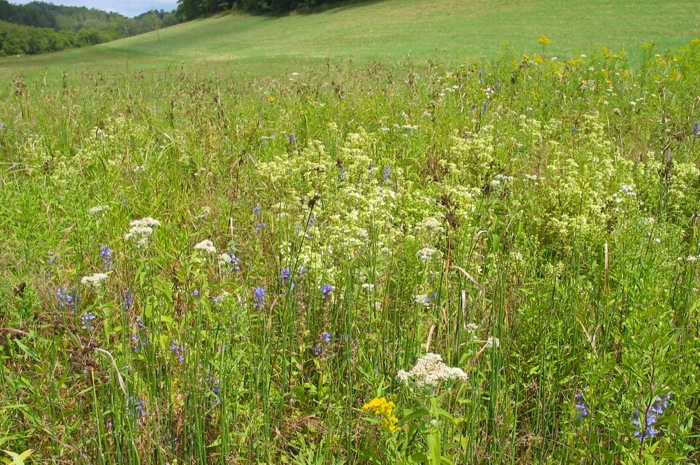[To see photos and stories of this prairie in other years, go to the links on the main East Center Valley page.]
We burned the rest of this prairie (the part we didn’t get to last fall) in the first week of April.
This time everything went perfectly – it was quite dry, the fire breaks worked, and everything burned quickly and completely. The wind was coming from the north, so we started at the south wet end and burned toward the north. Mike was happy because there were big flames, and I was happy because the fire burned and was always under control. We did it with just the two of us. Here’s the burning.
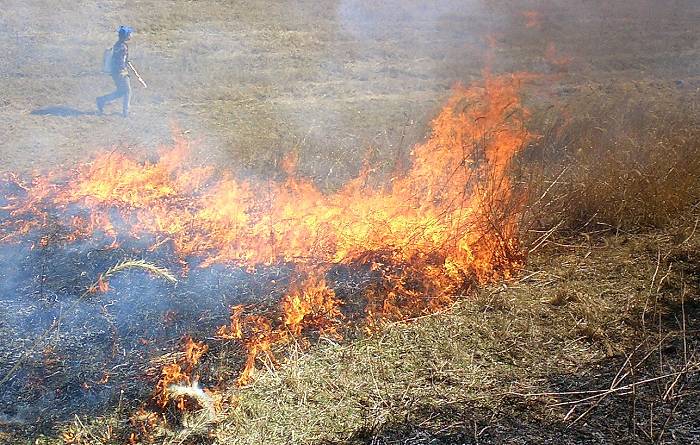
And this is just after we finished, with the gator loaded with our buckets and backpacks of water.
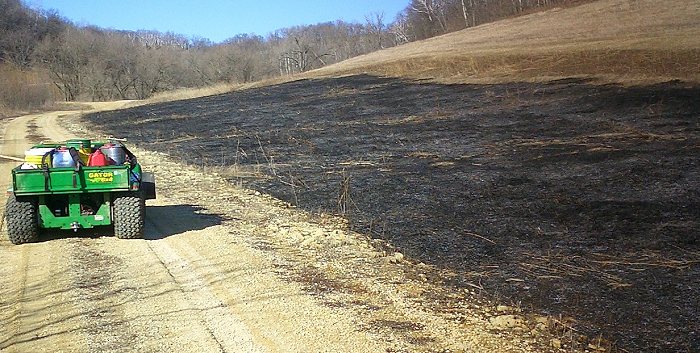
This is a view of the burn site from the house. The blackened area is the burn, the medium brown area to the left, behind the line of trees, is the area we burned last fall, and the light brown strip above them on the hill is the old field between the prairie and the woods.
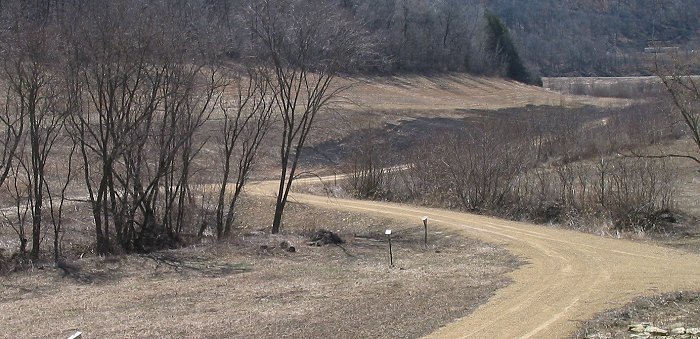
The burn area started turning green very quickly. This photo was taken two weeks later – the green is mostly tiny dandelions.
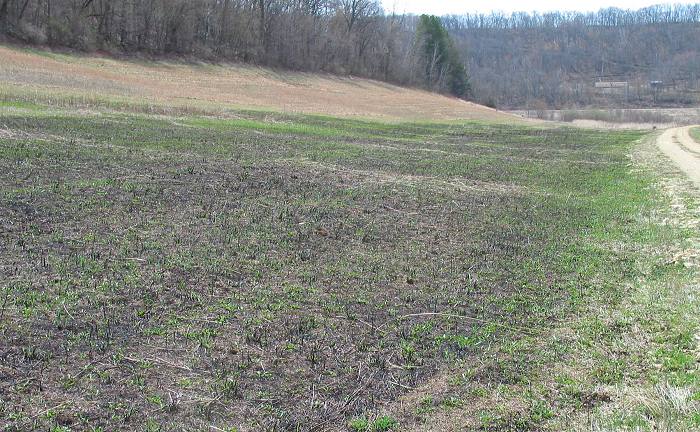
This is a view of the burn area from the bluff above the house. It was taken at the end of April – about 3 weeks after the burn.

The prairie grew very tall this year. There was a still lot of Wild Rye. Spiderwort bloomed for the first time, and a new prairie plant bloomed that I didn’t plant – Indian Paintbrush (Castilleja coccinea). I only found one plant, so I assume it came from a seed accidentally mixed in with the other seeds that I bought. It grew very well, it’s a beautiful plant, and it’s supposed to grow around here, though I’ve never found it in the wild, so I’ll plant more of it this year.
Indian Paintbrush
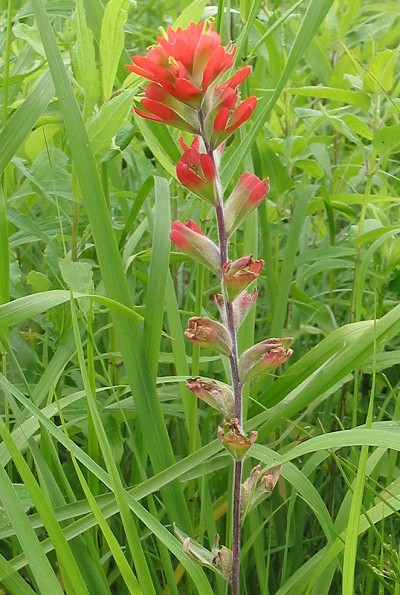
This is a low area, next to the driveway – it gets very wet in the spring so the Cup Plants (Silphium perfoliatum) grow well.
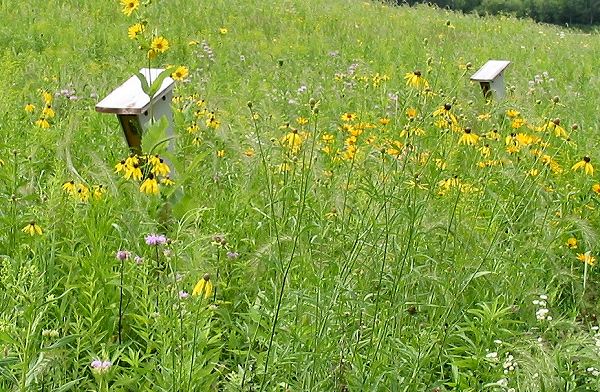
There were many more flowers blooming this year – in this photo you can see Oxeye (Heliopsis helianthoides), Yellow Coneflower (Ratibida pinnata), Bergamot (Monarda fistulosa), Canada Tick-trefoil (Desmodium canadense), and Wild Rye (Elymus canadensis).
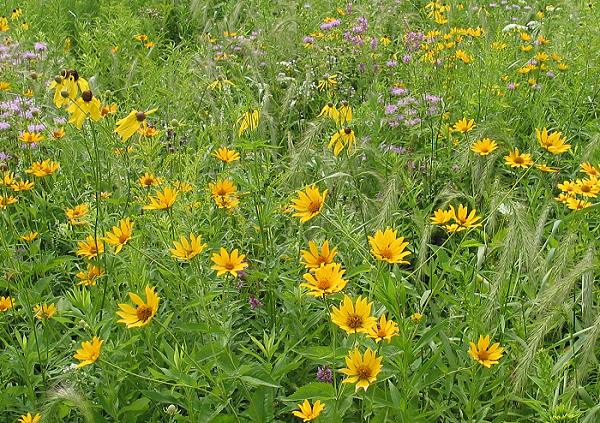
The wet prairie at the south end is getting more diverse and more interesting to look at every year.
8/29/2005 Joe Pye Weed, Boneset, Blue Lobelia and Canada Goldenrod
8/29/2005 Boneset, Black Bulrush, and Horsetail
8/28/2005 Boue Lobelia, Boneset, Black Bulrush and Swamp Betony

